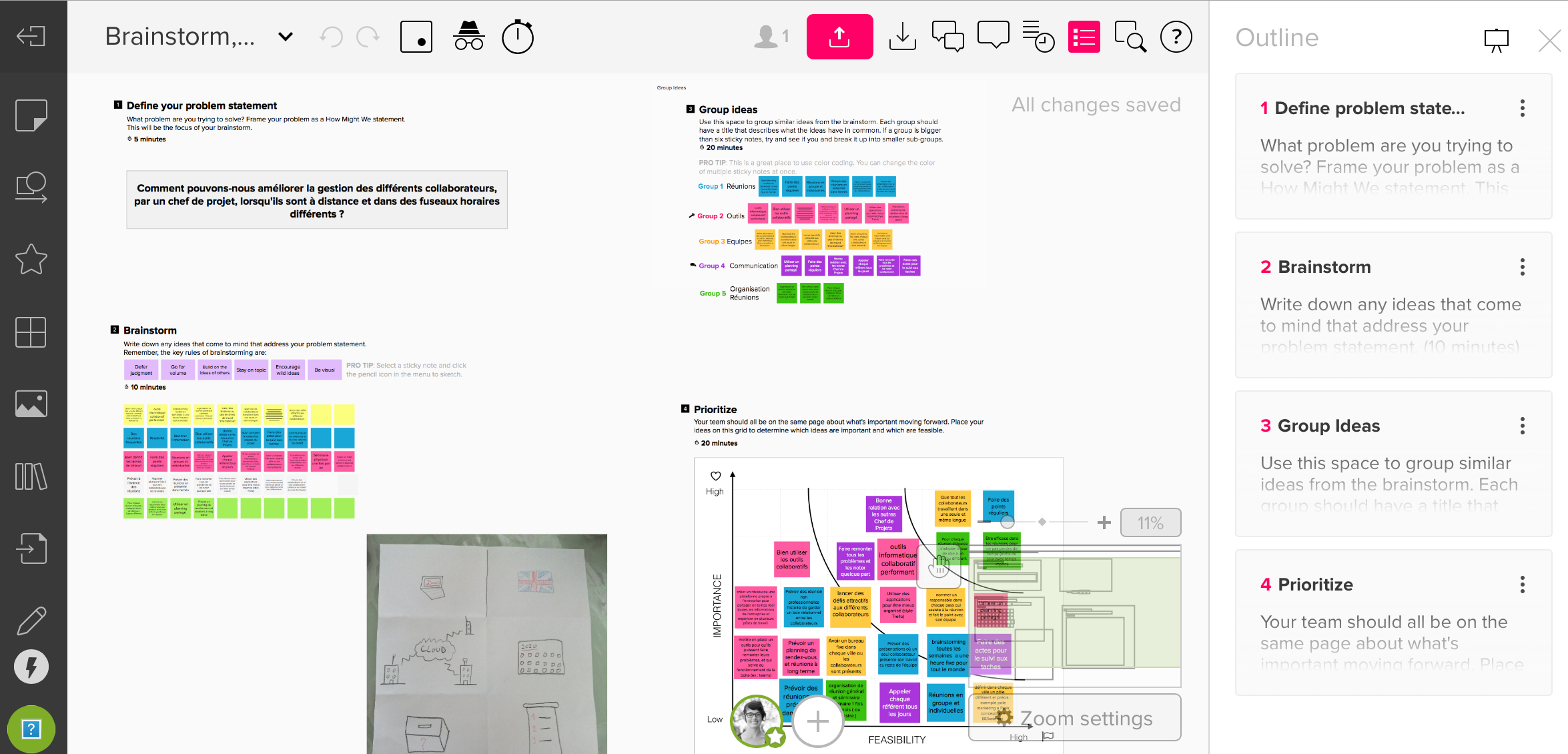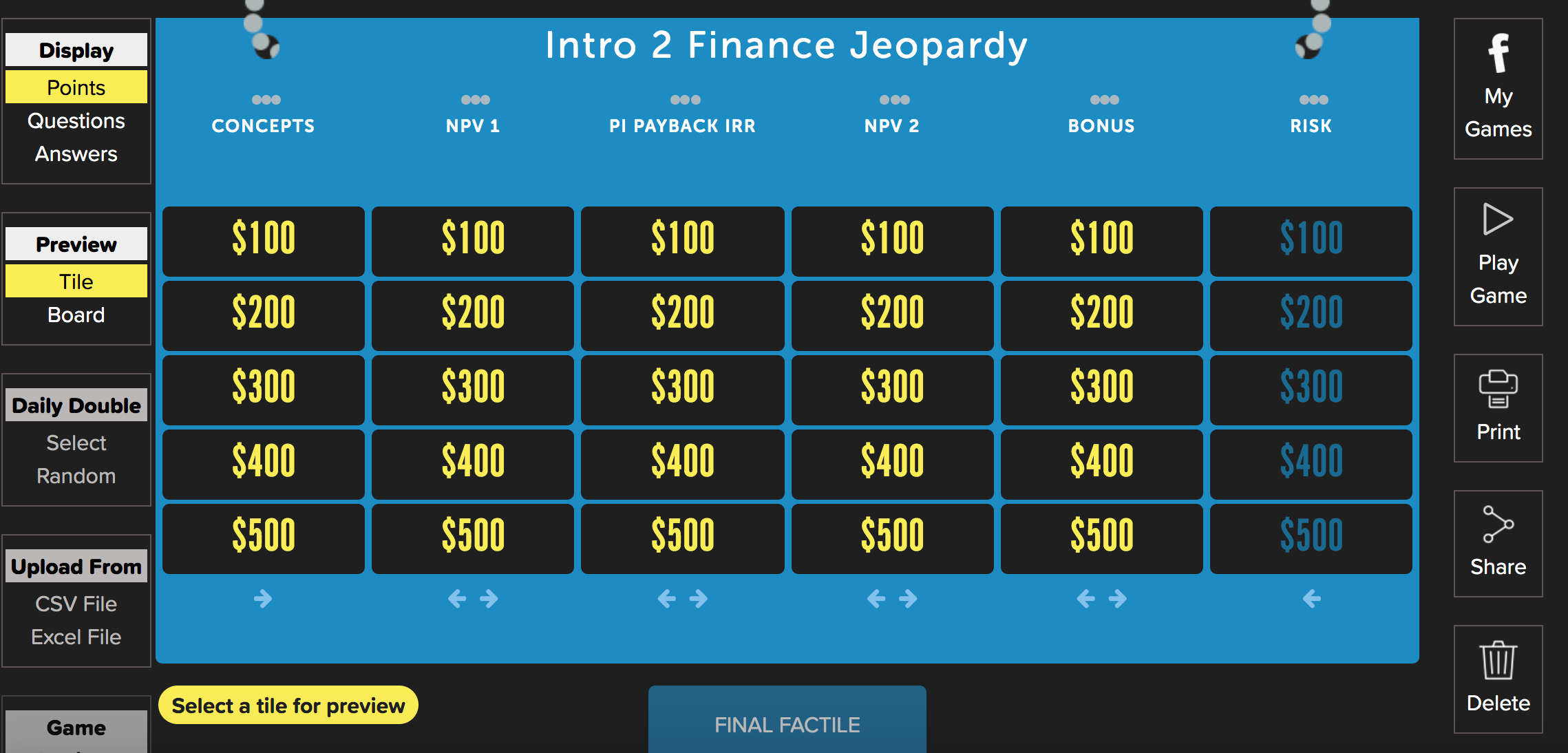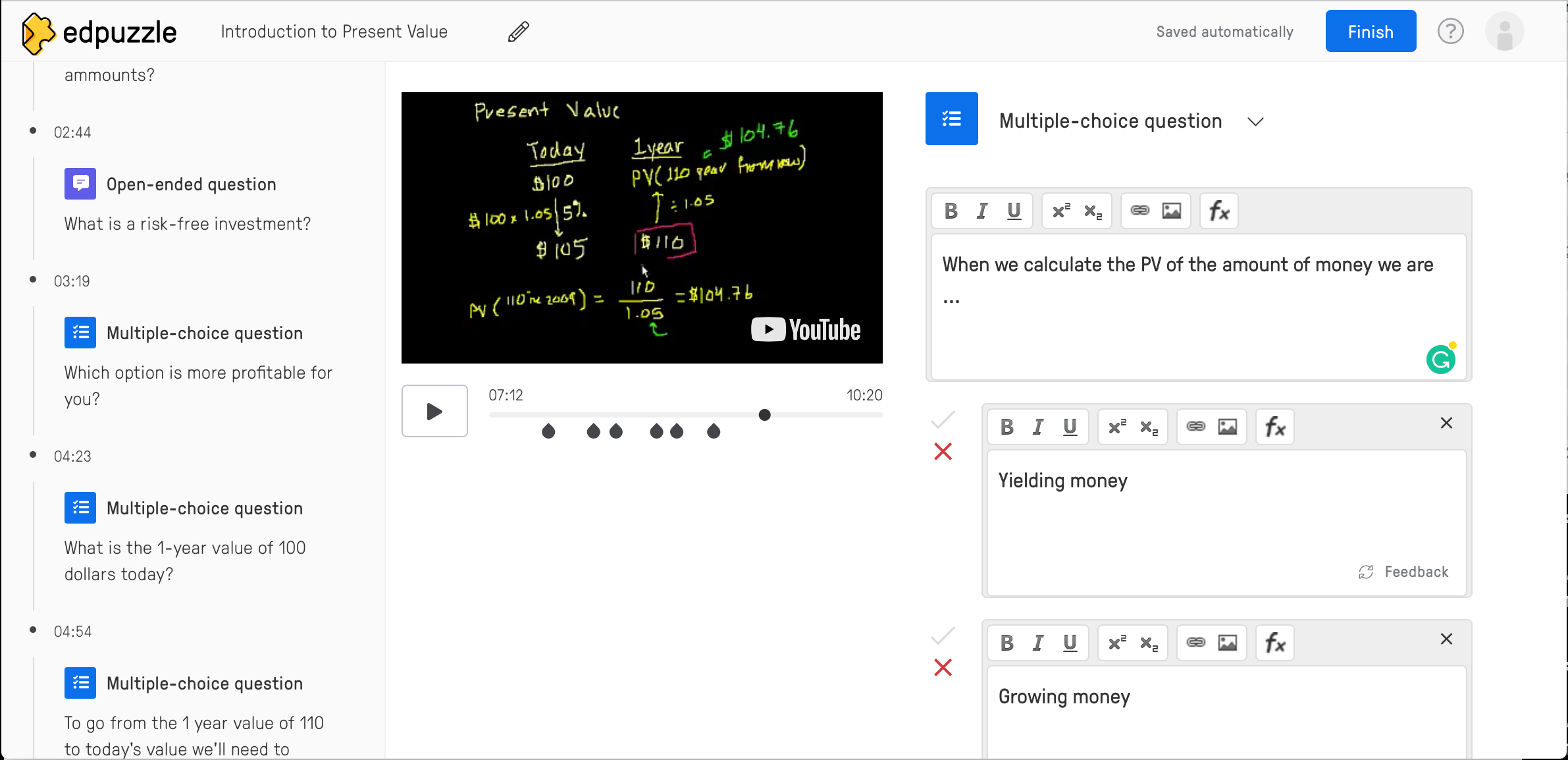Divide and conquer
I often hear faculty claiming their students don’t engage as much online as they do during in-person classes. Blame the bad internet connection, the overstimulation from the computer, or online platform’ issues. The truth is that attending class online is nothing like attending in person. Now, this doesn’t mean online classes provide students with fewer opportunities to learn, nor do they have to be less productive or engaging. But as both experiences are quite different, the approach to teaching needs to be different as well.
The best way to keep your students engaged during an online lecture is by creating plenty of occasions for them to interact and learn. Instead of planing a two-hour non-stop lecture, you better plan several 10-minute-length learning activities.
This is how you can split your online lecture into short, meaningful, and engaging learning activities to keep your students engaged.
1. Warm-up energizer
Duration: 5 -10 min
The first five minutes of your lecture are crucial because it determines how much a student will care and pay attention thereafter. It’s like when you watch a movie on Netflix, if you’re not caught up over the first minutes, you’re likely to switch to the next flick.
A warm-up or energizer is a great way to kick off your lecture. It’s not only a means to captivate the mind of your students but also to prepare them for the learning itself.
You can imagine a 5 or 10 minutes activity that will help students get into the zone before you go in depth with the curriculum. The warm-up can start by asking your students how they feel and their current mood. Not only this will break the ice, but it will give you an idea of students’ state of mind and learn about any struggles they might be facing. A mood wall can be perfect for this, use a word cloud app or have students write their mood on the blackboard.
Once everyone shares how they are and feel, you can pass to a fun energizer to set the ambiance and elevate students’ mood.
You don’t need to prepare a complex ice breaker. Something as simple as a show and tell will do. You can ask your students to show an object of their choice and share a memory or story with the class, explaining why they chose that object. You can also do a gif contest where students post a gif that represents their current state of mind — and body — at then have them vote for the best one. Everyone would have a laugh and will get energized to start the lecture. There is plenty of fun and simple energizers you may want to try. All you need is 5 to 10 minutes to get the ambiance going and give students time to energize and get ready to absorb new knowledge and stay focused.
2. Recap the last topic
Duration: 10 -15 min
To make sure everyone gets into the zone before introducing any new subject, start by doing a recap of the last topics. You can use gamification to make recaps more engaging. So instead of talking through a set of slides to recap the last lecture, replace it with a short interactive quiz to test students’ knowledge and understanding of concepts in a fun way.
You can prepare a set of five or ten questions about the concepts seen during the last lecture. Instead of asking all the questions at once, you’ll ask one question at a time, followed by a brief discussion to explain the correct answer. Once they answer the question, you can ask the student leading on the board to explain to their classmates why their answer was right. Then, you can add up to their reasoning and fill in the gaps if needed.
While the leaderboard itself encourages students to put their best efforts into the task, you can improve their engagement by adding a small prize to the contest. I usually go with a sweet treat, coffee, or something of the sort.
There are plenty of apps that are easy and free to use like kahoot, slido or quizlet.
3. Topic introduction
Duration: 10 -15 min
After the recap and once everyone is in the zone, you can now introduce the lecture’s topic. The idea is to proceed gently into the new learning material without losing students’ attention.
There are many alternatives to introducing new topics that are more effective than a set of slides. You can, for example, show a short video that relates to the topic. TED platform has an impressive library for you to use and get the conversation going. Or, you can start with some questions and have students list or state what they know and don’t know about the new topic.
Another engaging method for introducing new topics is through storytelling. Relating study content to real-life situations can help students understand the importance of the topic and make meaning out of it. You can narrate a story from your own experience or from a business or someone else, depending on the subject. For example, when introducing a unit on innovation, you can use the example of how Apple came up with the iPod idea.
4. Break
Duration: 5 -10 min each (Repeat 2 or 3 times, depending on lecture’s length)
Attention span is shorter for online classes compare to those in person. So breaks are really important and you should have them more frequently. They do not need to be long breaks, and my take is they should not last over 5 to 10 minutes — unless your lecture is scheduled during lunch hours. Breaks should allow students to go to the toilet, grab a coffee, stretch legs and clear the mind. With longer breaks, you risk losing some of your students both physically and mentally as they step out of their learning zone.
The key is to plan frequent brief pauses, let’s say two or three 5 minute breaks for every hour of lecture instead of having one 15 minute break in the middle of the class.
I also find it very effective to announce to your students when those breaks will take place from the very beginning of your class. This will help students to keep focused during the lecture time, as they don’t need to wonder when they can rush to the toilets or grab a cup of coffee.
5. Go deeper
Duration: 15 -20 min
After everyone has stretched, you can now come back to your lecture and go deeper into the topic. It’s time to get to the core of the lecture and do your thing.
The way you approach this part is up to you and depends a lot on the topic you’re teaching. There are as many approaches as there are topics to teach. Just remember to mix it up and try to provide as many opportunities for learning to every student as possible.
6. Group activity and breakout rooms
Duration: 30 min
Letting students work on autonomy is crucial to ensure they’ve understood and interiorize the topics taught. Group activities are also great for developing social skills and encouraging peer learning.
There are plenty of active learning exercises you can use to emphasize a topic. The most common are studies cases, but you can also go with the jigsaw technique or scavenger hunts to spur up active learning.
Breakout rooms are the best way for conducting group activities, as students can work independently and not get distracted by what’s happening with other groups. However, breakout rooms can sometimes be a challenge for teachers because if not designed cautiously, students may use them as an escape room.
My advice is that you explain clearly what you expect from them and require a deliverable. Be sure to handle written instructions about how to complete the task and what the deliverable should look like. I find really helpful to name a facilitator per group that will lead the group work and ensure they completed the task and meet the requirements. Also, it’s important to visit frequently each room to see if there are doubts or difficulties in completing the activity. Visiting the breakrooms is crucial even when the group doesn’t request help explicitly, this will also show that the activity is not optional.
7. Q&A
Duration: 5- 10 min
Once group activity is over, is important to take some time to answer questions, doubts or just discuss the task itself and the process of completing it.
The goal of the Q&A is to ensure everyone is on the same page. It helps to consolidate the skills and knowledge gained during the task performed earlier and to collect feedback. Each group can share their outcomes and you can facilitate a discussion around the how, what, and why of the task completed.
8. Wrap up
Duration: 5 min
A wrap-up is where you summarize briefly what you’ve just taught and learn during the lecture. It’s really important to end each lesson with a quick recap of what you have covered in class. As for the Q&A just before, this quick review of the lecture’s key points is essential to reinforce learning.
A wrap-up can consist of a slide with a bullet point list with the main takeaways. But I recommend doing something more interactive so that you involve your students in wrapping up the content and somehow test what they’ve learned. I suggest using a collaborative blackboard where you and your students can add to the discussion. Apps such as explaineverything or miro work great for this purpose.
9. Retrospection
Duration : 5 -10 min (homework)
Finally, you can close the lesson with a retrospection exercise. Here is where students get to reflect on their learning experience, not just what they’ve learned, but how they’ve learned.
Since this is kind of deep and personal, I usually leave it as homework. My favorite way of carrying this out is through 1-minute videos where students get to post individually their thoughts. I post a video with two to four questions and ask them to post their answers as soon as possible while they still have the ideas fresh in their minds.
Some possible questions are:
- What was a eureka moment (something you learn that really caught your attention)?
- What did you find challenging?
- What part of the class did you like/dislike the most?
- What things do you think we missed out?
- What are three takeaways from today’s lecture?
- What would you like to learn or go deeper next?
For video assignments, I use flipgrid because it’s really easy to use and you can control how videos are shared between your class and on the web. But you could also use moodle or canvas tools. Or if your students are ok with it, Instagram is also a possibility.
In a nutshell, the key to engaging online classes is delivering small chunks of knowledge and information at a time and providing plenty of diverse opportunities to learn.
Remember to warm up to get into the zone, plan frequent and short breaks, design short group activities, wrap up with the main takeaways, and reflect on the learning experience.
If you want to keep your students’ attention, make it short, make it meaningful, and make it fun.
















